How to Cut Back Outdoor Garden Evergreen Ferns
Are your outdoor ferns looking old and tired? Now is the time to refresh them so they look vibrant and healthy again. This post will guide you through the best practices for cutting back outdoor evergreen ferns just in time for the new gardening season.
Evergreen ferns are the focal point in the shadier areas of my garden, along with the hostas and hellebores. Their greenery lasts all year and adds a touch of perennial beauty to any outdoor space.
Although these hardy outdoor fern plants stay green throughout the seasons, they require yearly pruning for the best results. Cutting back evergreen ferns is a vital gardening task that helps maintain their shape and size and encourages new growth.
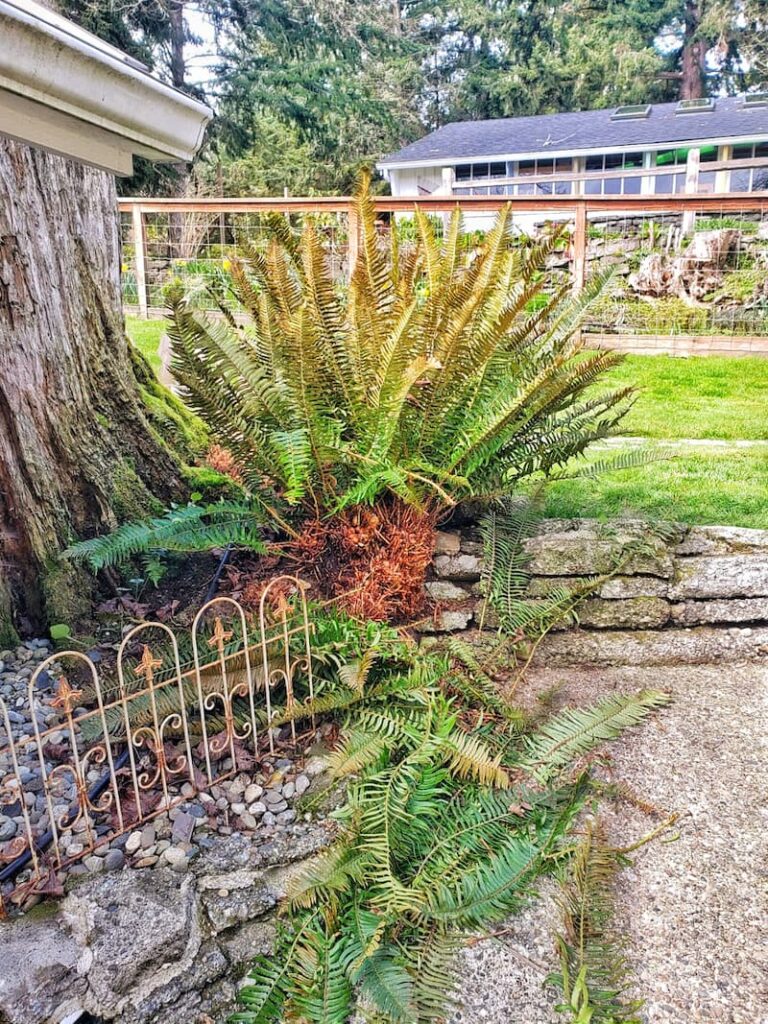
As an Amazon affiliate, I earn a commission from qualifying purchases at no additional cost to you. My blog also features other affiliate links for your convenience. Click here to read my privacy policy.
Understanding Your Garden Ferns
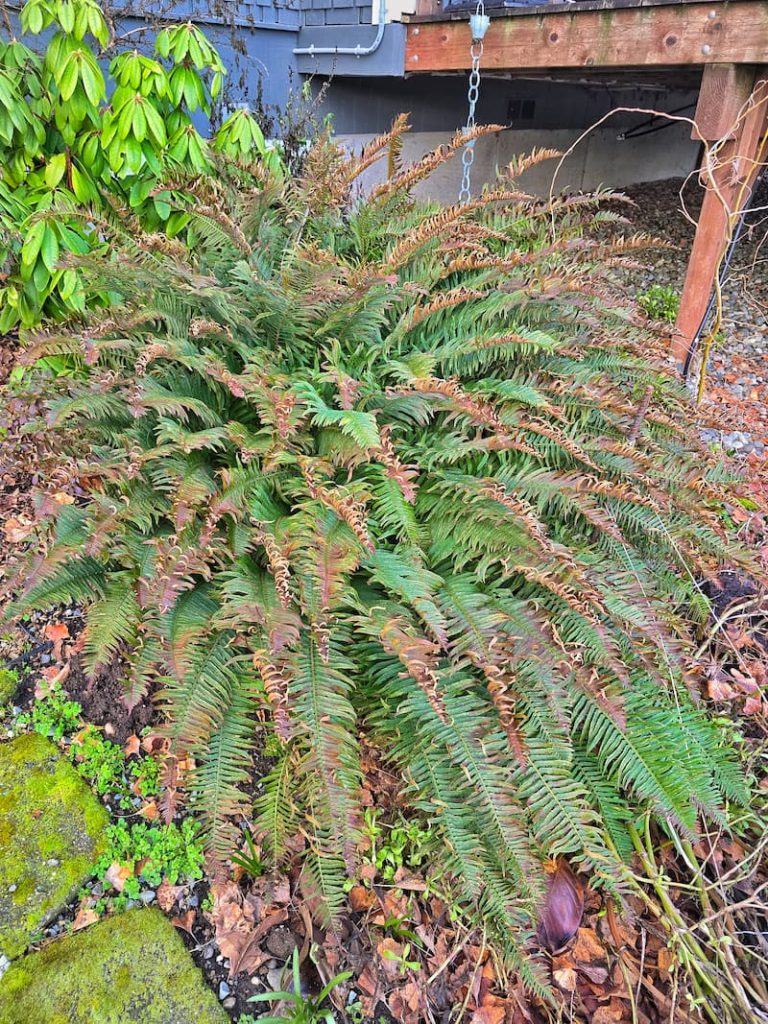
Evergreen fern plants are a popular outdoor plant here in the Pacific Northwest (PNW). Deciduous ferns lose their fronds as winter approaches, but the evergreen fern plants retain their foliage, keeping the winter landscape green and lush.
They thrive in indirect, bright light. A few hours of morning sun or gently filtered light through the cover of trees is ideal.
What is a Fern Frond?
A fern frond is the plant’s leaf, usually composed of a stipe (the leaf stalk) and a blade. The blade is often divided into smaller parts called pinnae, which can give the frond a feather-like or lacy appearance.
They appear from the center or crown of the fern and uncurl from a coiled position in a process known as fiddleheading or crozier.
Despite their evergreen nature, outdoor ferns benefit significantly from annual pruning. As ferns typically cycle their fronds or leaves yearly, you’ll notice older fronds turn brown and wither, making way for new growth.
Knowing when and how to cut back old fronds can prevent disease and refresh the plant by encouraging healthy, new growth.
Different Types of Ferns to Cut Back
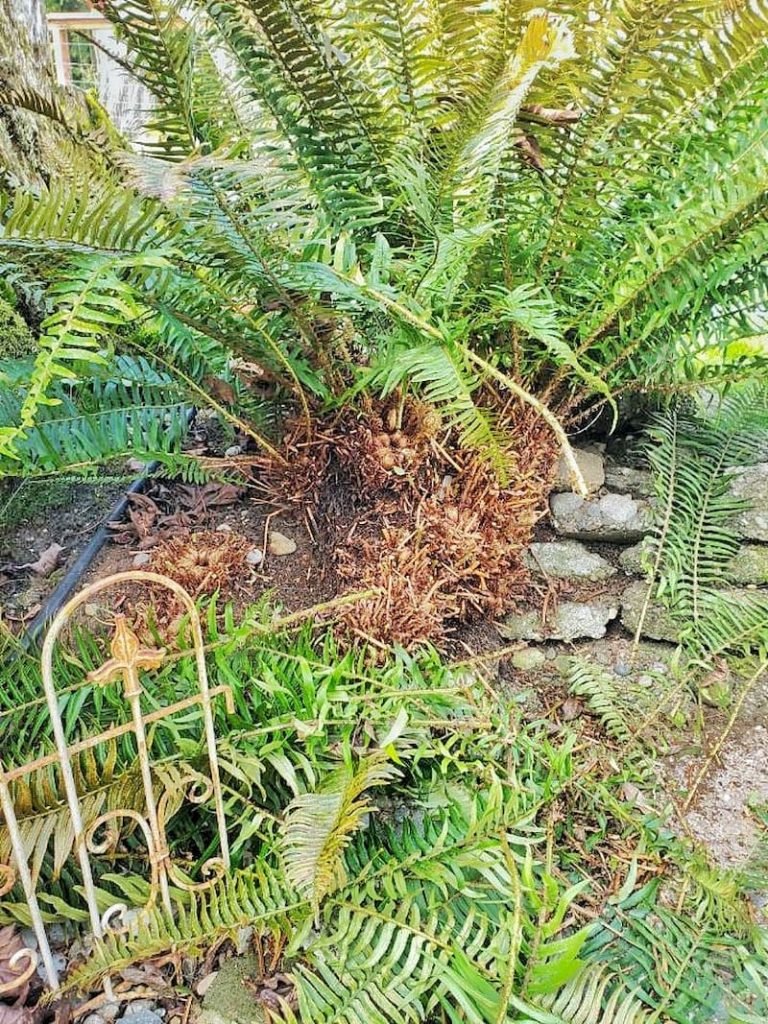
Garden ferns come in a variety of species, each with unique characteristics and requirements for optimal growth. From the soft, delicate fronds of the Lady Fern to the sturdy, leathery fronds of the Sword Fern, evergreen ferns can adapt to a wide range of environments and soil types.
When to Cut Back Your Ferns
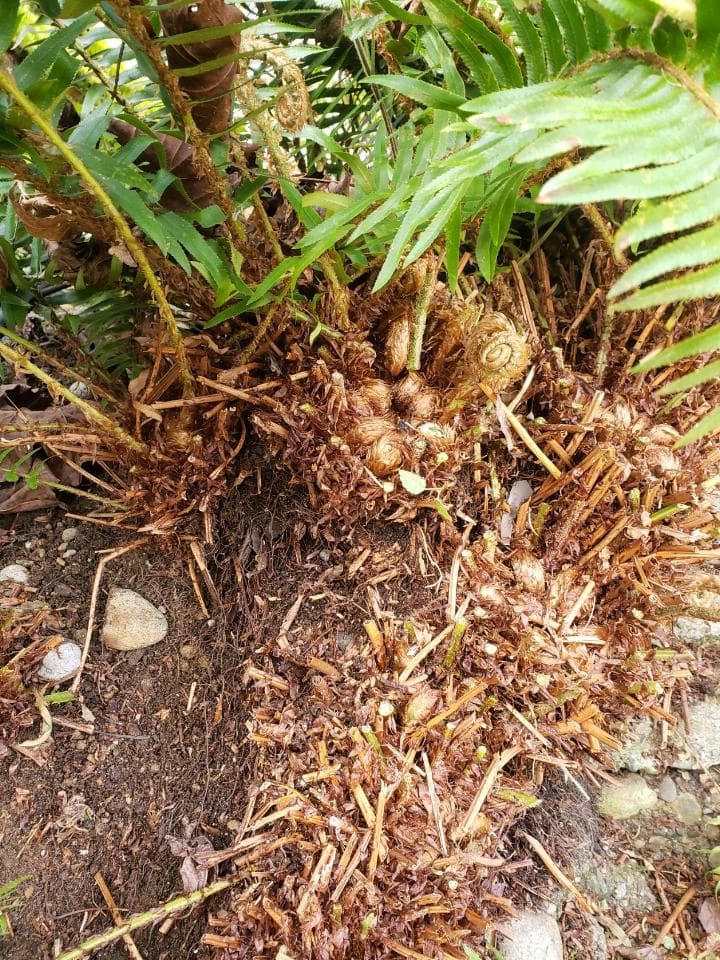
Timing is everything when it comes to pruning evergreen ferns, which is as much about preserving their beauty in the garden as it is about promoting their health.
The best time of year to cut back these evergreen outdoor plants is in late winter or early spring, just before the onset of new growth. This is when the garden is awakening from its winter sleep. It lets gardeners cleanly remove old fronds without damaging the emerging shoots.
I usually cut back my fern plants in late February or early March in hardiness zone 8b.
Heavy pruning too early can expose the plant to harsh winter elements. Waiting too long can accidentally cut new growth, stunting the plant’s development.
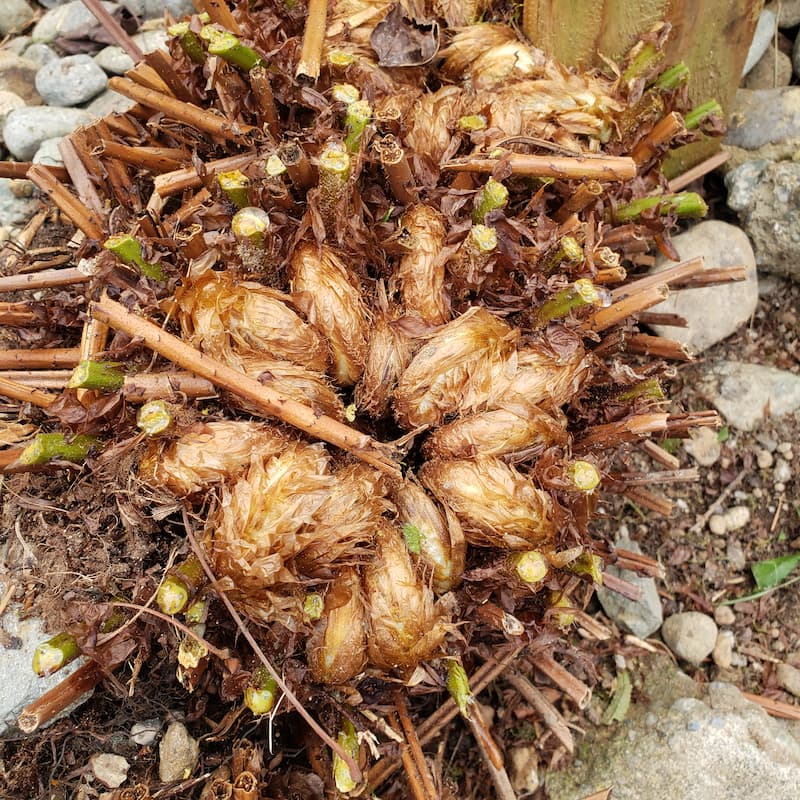
The right time to prune your evergreen ferns is before new fiddleheads, the curled beginnings of new fronds, start to show. This makes the process easier and reduces the risk of damaging the new growth.
How to Cut Back Outdoor Ferns
Tools You Will Need
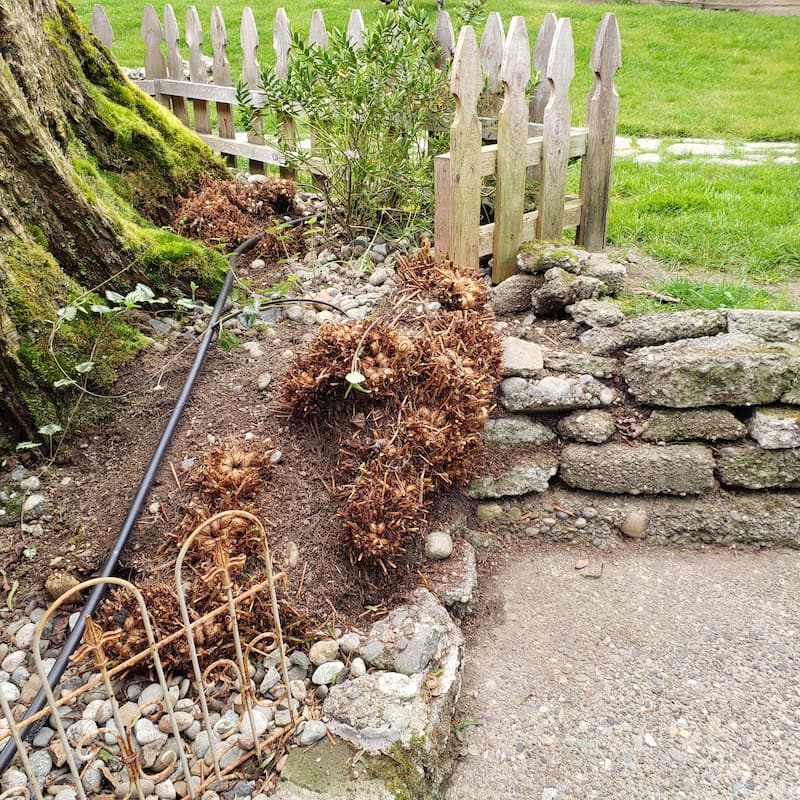
Pruning evergreen ferns is a delicate task that requires the right tools to ensure a clean cut and minimize damage to the plant. Here are the essential tools you’ll need to cut back your evergreen outdoor ferns:
Step-by-Step Guide to Cutting Back Evergreen Ferns
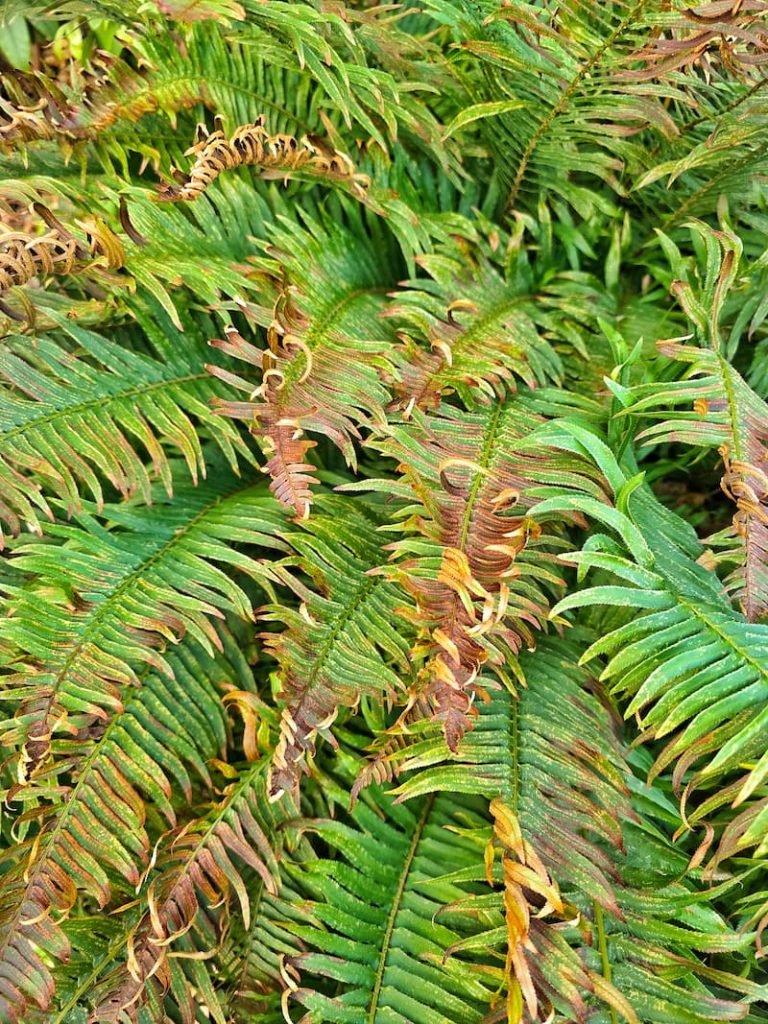
Pruning evergreen ferns encourages healthy growth and maintains the plant’s aesthetic appeal. Follow these steps to ensure you cut back your ferns correctly and safely:
Step 1: Inspection and Preparation
Inspect your ferns closely and identify any dead, damaged, or diseased fronds. Make sure your pruning shears are clean and sharp.
Step 2: Identifying Which Fronds to Cut
If your fern plant is healthy and most leaves are green, look for only the older, damaged, brown fronds. These fronds are typically found at the bottom or interior part of the plant.
Leave healthy green fronds intact so they will continue to photosynthesize and support the plant’s growth.
The evergreen ferns in my garden are cut down completely each year because most of the fronds have brown spots and look like old foliage.
Step 3: Proper Cutting Technique
Whether trimming targeted fronds or cutting back the entire plant, cut close to the ground or main stem using a clean, angled cut. This will help prevent water accumulation on the cut surface, reducing disease risk.
Be careful not to damage the plant by cutting into the crown of the plant or emerging fronds.
Step 4: Disposing of Old Fronds
Gather the fronds you’ve removed and dispose of them in a garden waste bag or bin. Do not compost any diseased fronds, which could spread pathogens in your garden.
Step 5: Aftercare for Your Ferns
After pruning your garden ferns, water them gently to help them recover and settle any disturbed soil around the plant’s base.
Apply a layer of organic matter around the ferns to retain moisture and provide nutrients.
What to Expect After Pruning Your Ferns
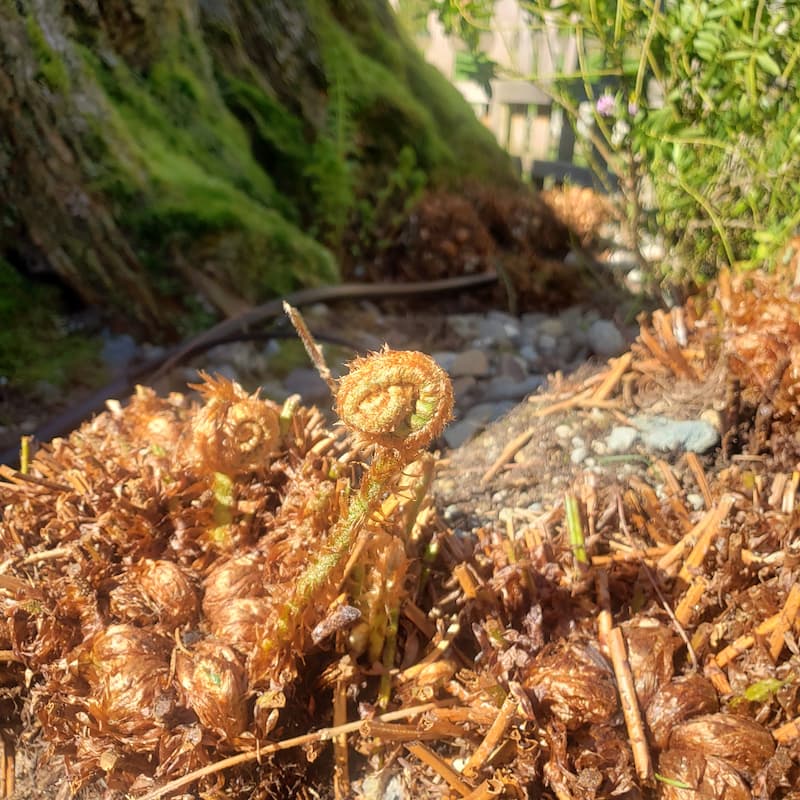
After pruning the older fern fronds, tiny “curled fists” or “knuckles” start forming at the base of the fern. These are the new fiddleheads.

Each of these will unfurl into fresh and delicate fronds, creating fresh new plants for the growing season.
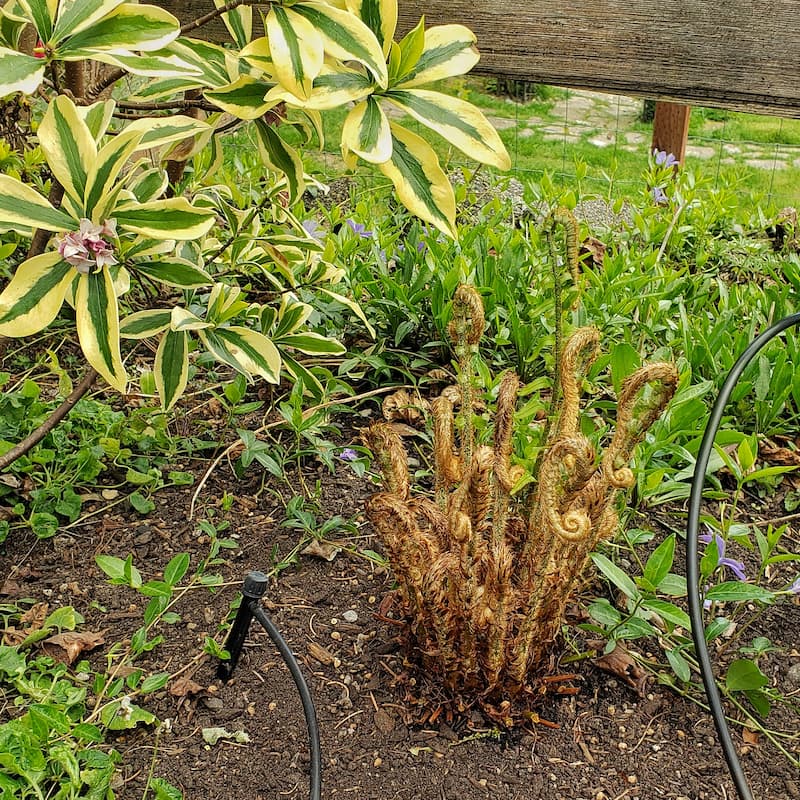
There’s only one drawback to cutting your hardy ferns to the ground yearly. These low-maintenance plants will look pretty ugly for a few weeks after a severe pruning while the new foliage grows in.
But trust me. It will be worth it in the long run!
How Long Does It Take For New Fronds to Grow Back?
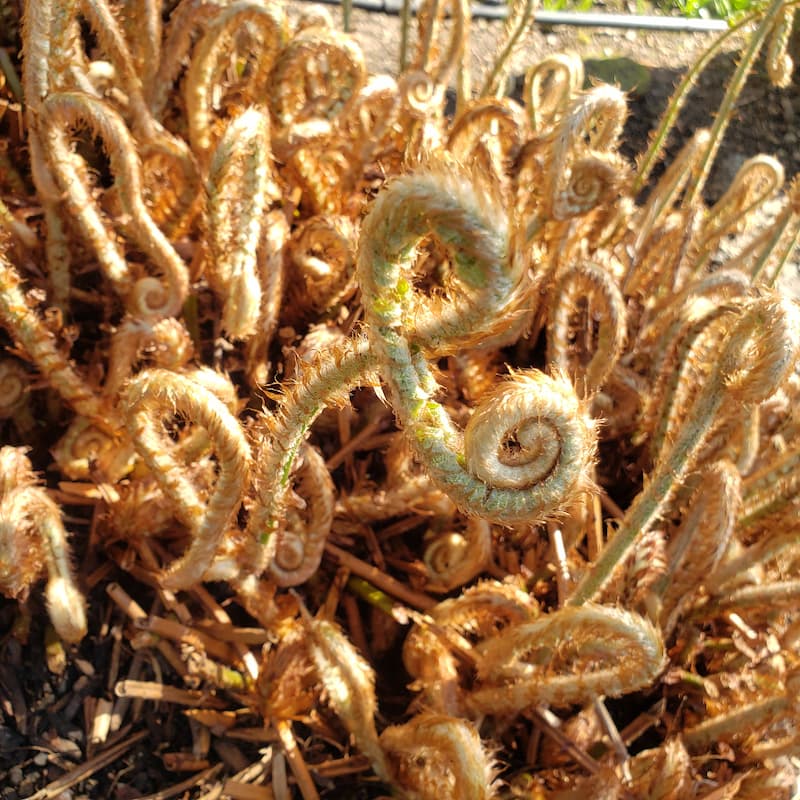
It usually takes about 2-4 weeks for new fronds to fully develop after cutting back outdoor evergreen ferns. This time frame can vary depending on the variety of the fern and the climate.
Garden Supplies and Tools
Check out my favorite garden supplies and tools for the growing season. Whether you’re looking for potting soil or deer repellent, you’ll find what I use in my own garden.
Maintenance and Ongoing Care Throughout the Year
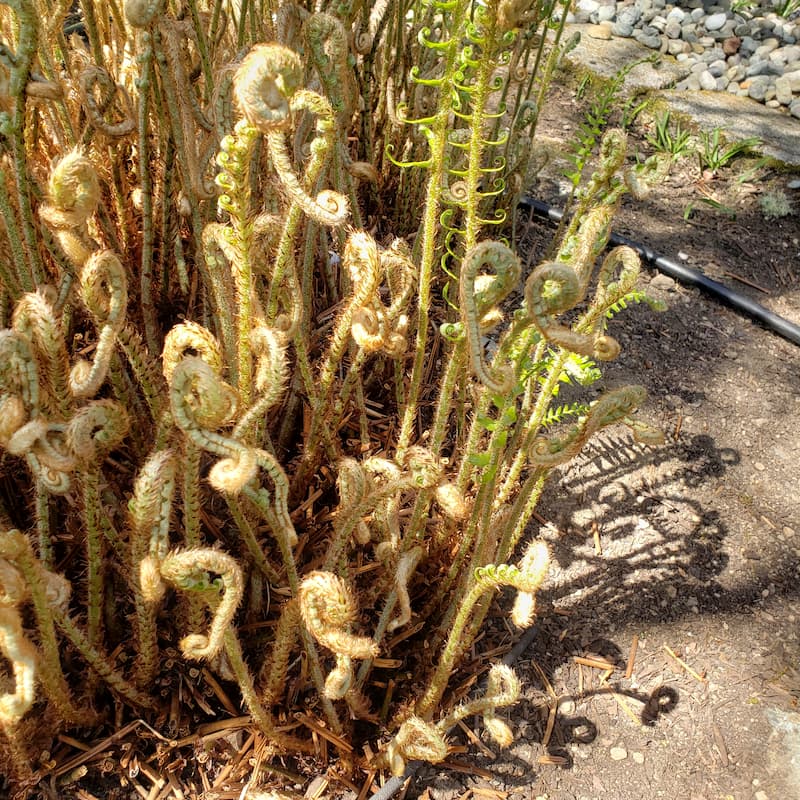
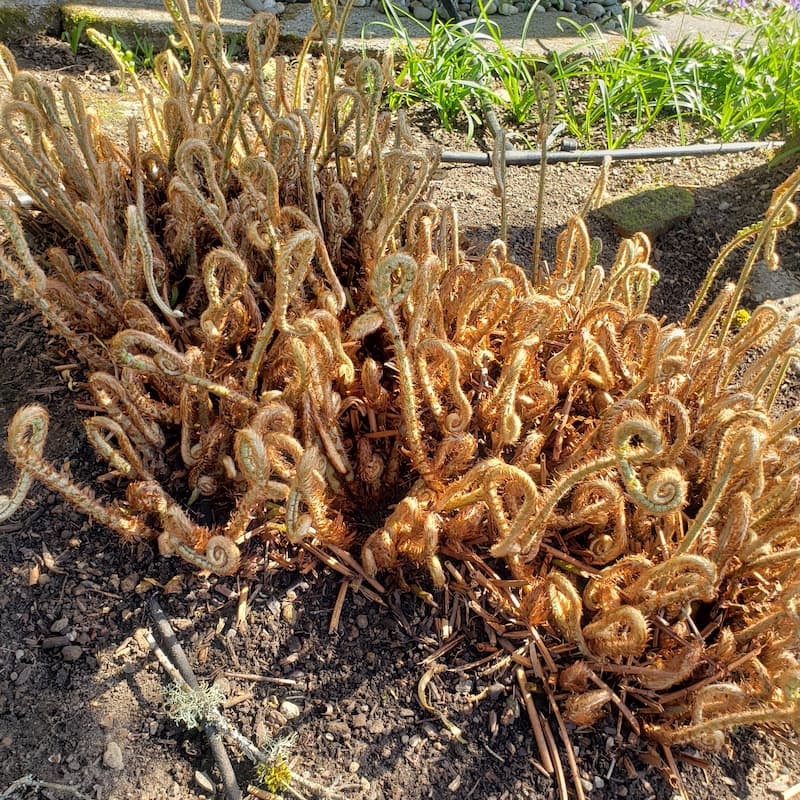
Throughout the year, proper care of your outdoor evergreen ferns includes removing any fronds affected by pest infestation or diseases. Pruning unhealthy fronds will help to prevent the spread of disease and keep your ferns thriving.
If the entire plant is unhealthy, cutting it back to the ground is a good rule of thumb so the disease does not spread.
Common Mistakes to Avoid

Pruning evergreen ferns can seem straightforward, but there are a few pitfalls that even seasoned gardeners can fall into.
Being aware of these common mistakes can help you avoid them, ensuring your ferns remain healthy and vibrant.
Cutting at the Wrong Time
Pruning during the fern’s active growth period or in the dead of winter can lead to poor plant health.
To minimize stress on the plant, time your pruning for late winter or early spring, just before the new growth begins.
Ignoring Plant Health Indicators
Failing to inspect your ferns for signs of disease or pest infestation before and after pruning can lead to spreading diseases.
Regularly check your ferns for unhealthy signs and react to any issues immediately. Clean your tools before and after use to prevent the spreading of diseases.
Cutting Too Close or Too Far from the Base
Cutting too close to the crown of the fern can injure the plant, while cutting too far from the base will leave stubs that can harbor pests and diseases.
Cut fronds at their base, close to the ground or main stem, at a clean angle to promote proper healing.
Neglecting Tool Maintenance
Using dull or dirty shears can damage plant tissue and spread disease.
Keep your pruning tools sharp and clean. Disinfect them before and after each use to maintain their condition and prevent the disease from spreading.
Gardening Made Simple – Your Guide to Beginning Gardening
Most Common Questions About Cutting Evergreen Outdoor Ferns
When Is the Best Time to Prune Evergreen Ferns?
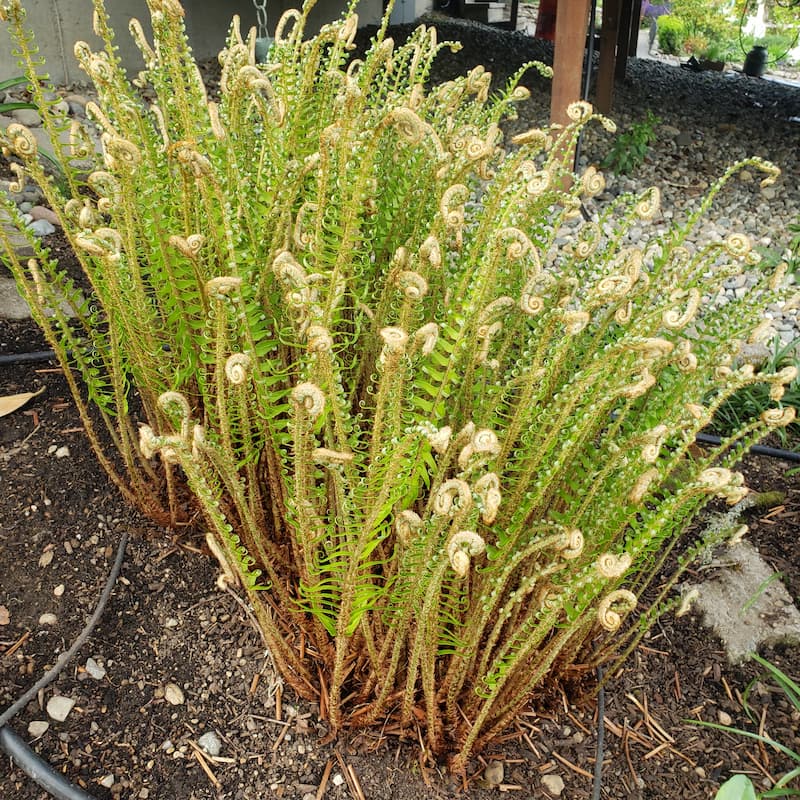
The optimal time for pruning evergreen ferns is towards the end of winter or early spring, just before the new growth starts. This timing helps ensure you’re not removing fronds that could protect the plant during the coldest months.
How Often Should I Prune My Evergreen Ferns?
Evergreen ferns typically require yearly pruning to remove dead or damaged fronds and encourage healthy growth. However, the needs may vary depending on the fern species and its growing conditions.
Can Pruning Help Control the Size of My Evergreen Fern?
Yes, selective pruning can help manage the size and shape of your fern, but it’s important to do so gradually.
What Should I Do With the Fronds After Pruning?
Removed fronds should be disposed of in a garden waste bag or bin. Avoid composting diseased fronds to prevent the spread of any pathogens in your garden.
Will Pruning Affect the Health of My Ferns?
When done correctly, pruning is beneficial for the health of evergreen ferns. It can remove diseased or damaged parts, encourage air circulation, and promote new growth. However, incorrect pruning techniques can harm the plant.
Are Ferns Evergreen?
Yes, many outdoor ferns are evergreen, meaning they retain their leaves throughout the year, including during the winter months. These ferns provide consistent greenery and interest in the garden even when other plants have died or gone dormant.
Each fern type has its own unique characteristics and benefits, making them versatile choices for adding texture and color to shade and woodland gardens or wooded areas year-round.
Final Thoughts About Cutting Back Outdoor Evergreen Ferns
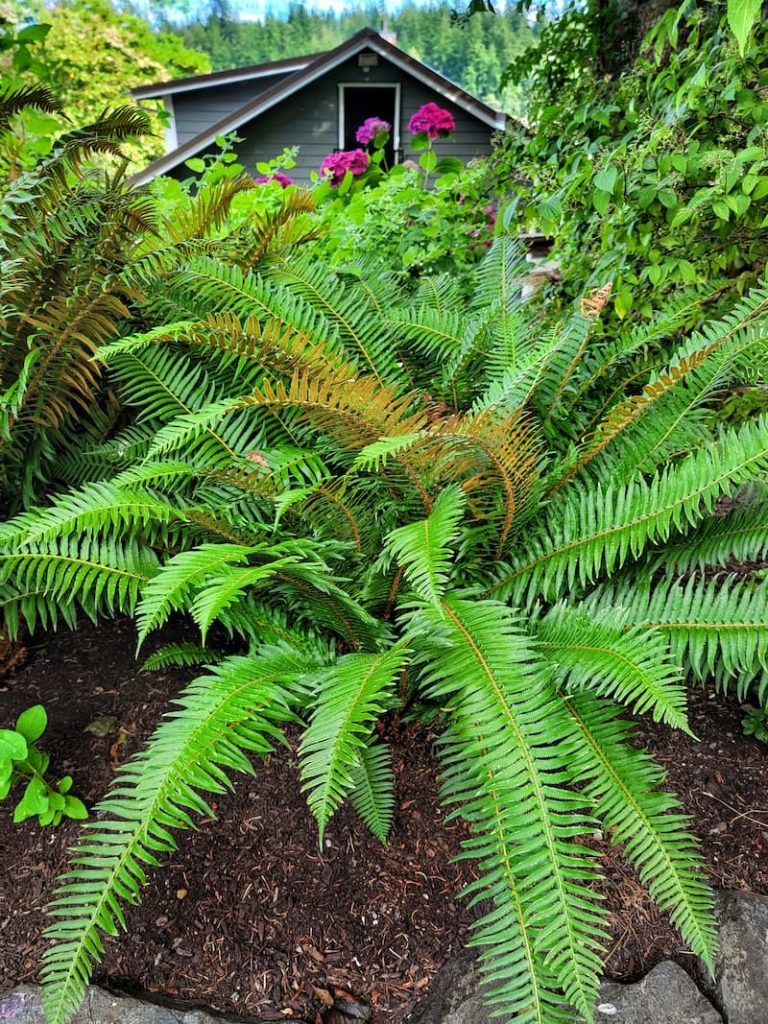
With the proper care and attention, evergreen outdoor ferns can be a beautiful addition to any garden. Pruning them every late winter or early spring will help keep the fronds looking their best and remain healthy for many years.
If you have any questions or additional suggestions, please share them in the comments below. And be sure to share this blog post link with anyone who may find these gardening tips helpful.
Until next time,
Happy Gardening!

I’m a self-taught hobby gardener. Everything I share with you on my blog is my personal opinion and things that worked for me.
MORE POSTS
For You To Enjoy
Follow Me for More Inspiration
Shop my Amazon Storefront, LTK sources, and my favorite home decor, garden, and lifestyle products. When you purchase from one of my links, I earn a small commission, which helps me continue sharing all the content you expect on my blog.
Be sure to follow me on Pinterest, Instagram, Facebook, TikTok and LIKEtoKNOW.it. Do you like gardening? Join my Facebook Gardening Tips & Tricks group.

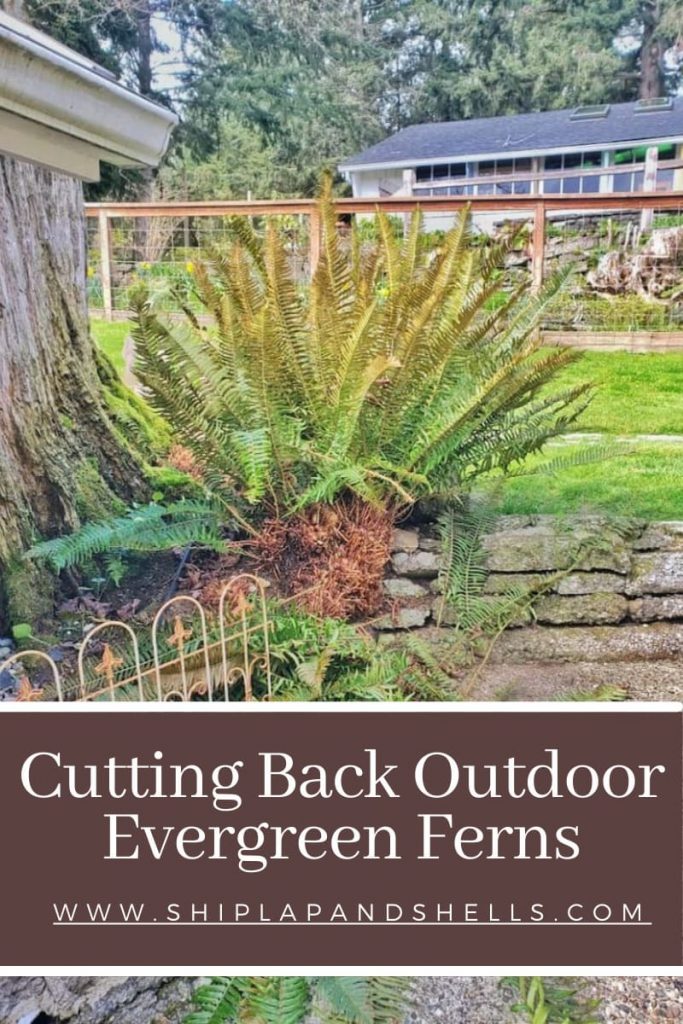










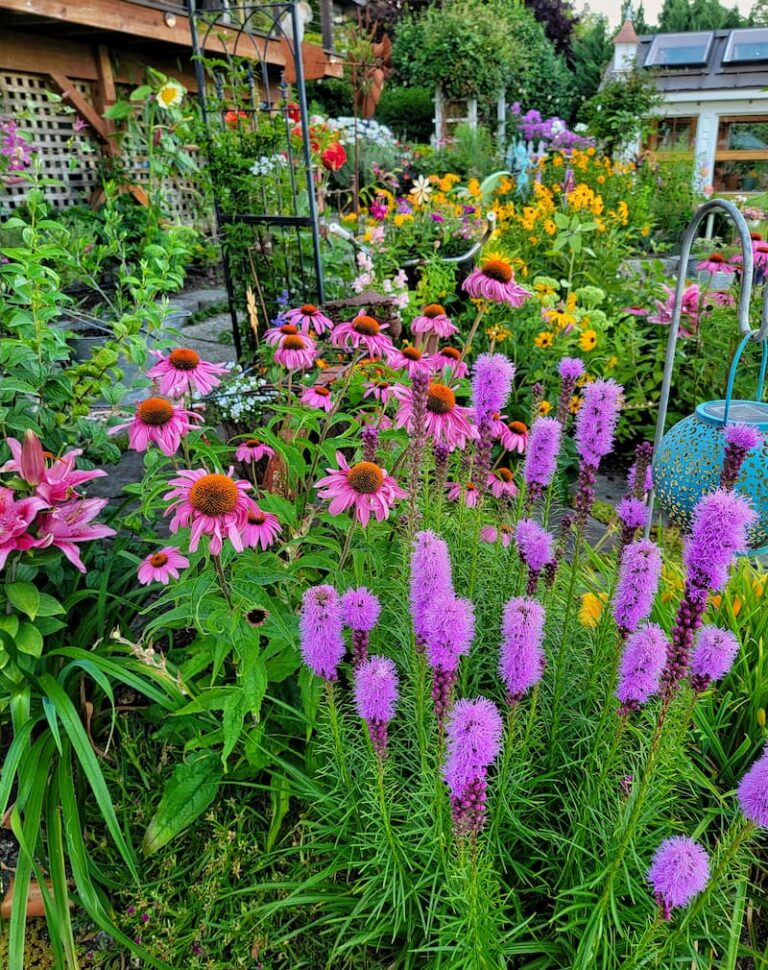


Kim, inspecting my ferns tomorrow to see what kind they are….I’ve never done this. Thanks for all the great info.
I have spring bulbs around my ferns so when I cut back the fronds, I have them to enjoy until the new ones grow in, then the bulb foliage gets hidden, a win win. My first year following your blog and I have found it so delightful.
I am so ready to get going on the garden. I am making quite a few tweaks to the garden this spring Kim and I are so excited to be able to grow even more! Thank you for all the tips, so helpful!
I love your posts. Very informative. I have a problem, though, understanding why when I have a subscription, as soon as I open a post and start reading, the entire screen is covered by a request to sign up for your posts! Then immediately an Ad will appear which blocks about a third of the screen, and I have to wait for a countdown before I can get rid of it. Very, very annoying. Anything you can do?
I can’t tell you how much I appreciate you letting me know about this. I have to work with both the ad agency and my email subscription company to find a solution. This would totally annoy me as well. I will try to see what I can do to make this a more enjoyable experience.
Kim,
Perfect timing! I needed this advise.
I do prune mine every year or at least every other year. I did want to mention that we have a lot of deer here and they love the fiddle heads, new growth, so I spray with deer spray while they are growing. Once they reach maturity they aren’t interested.
Great tips! My ferns are just starting to grow. Yours look so good already! xo